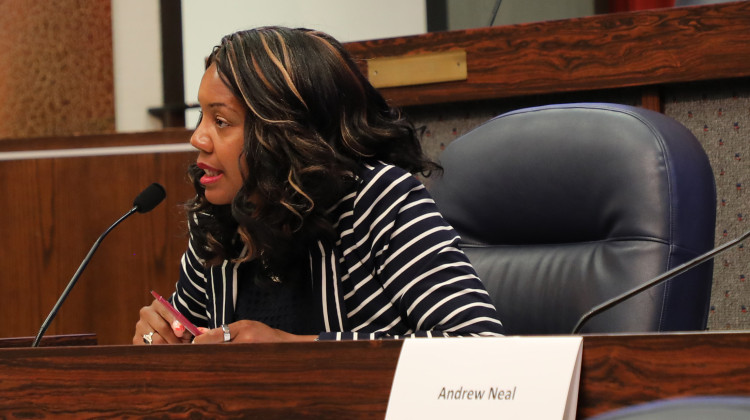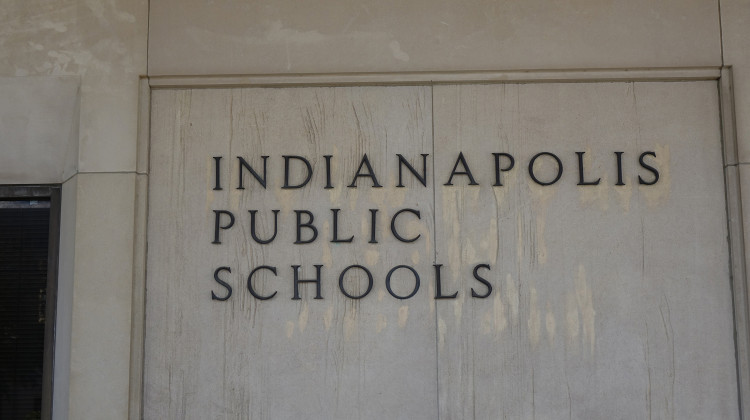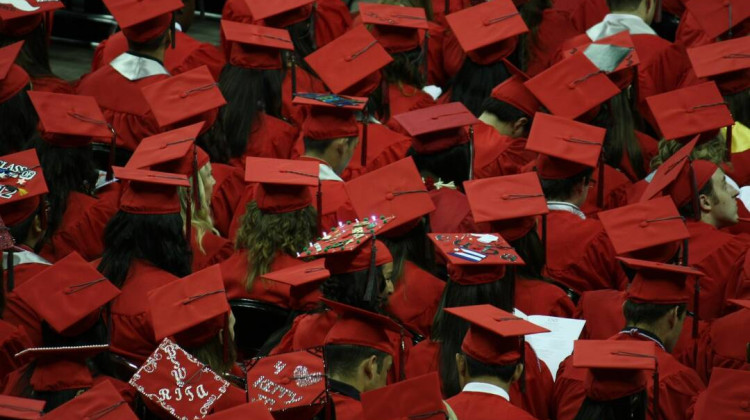
Indiana will now categorize about 470 students from the class of 2020 as having dropped out sometime during high school
WFYI File PhotoThe Indiana State Board of Education on Wednesday quietly rescinded an earlier decision to count nearly 1,100 additional students who left school without diplomas as dropping out.
Instead, under a new, more lenient policy, the state will categorize about 470 students from the class of 2020 as having dropped out sometime during high school. The rule determines whether students who withdrew to home-school should be left out of graduation rates. Those students did not have the required documentation to mark them as home-schoolers.
A Chalkbeat investigation found some schools inflated graduation rates by mislabeling students who should be counted as dropping out as home-schoolers. Sometimes schools recorded few or no dropouts but dozens of home-school withdrawals.
Wednesday’s board decision means high schools’ 2020 graduation rates will not decline as steeply as previously expected. It mutes the impact of a state law meant to reduce the incentive for schools to report as home-schoolers students who actually dropped out.
The new, less strict policy may detect fewer students who are mislabeled, and state board officials said they may recommend changing it in future years. But they argue that the policy will still help improve the accuracy of graduation rates.
The board approved the decision, which rescinded a December vote, without discussion or dissent. Board members Patrick Mapes and B. J. Watts, who work for school districts that are affected, recused themselves from the vote.
After the meeting, board member Pete Miller told Chalkbeat that some schools were likely to appeal the board’s prior decision, and board members decided to reverse course before facing those appeals.
“We’re admitting we made a mistake,” he said.
With Wednesday’s vote, the board will no longer penalize schools for about 600 students who it had counted as dropouts in December. A state audit had identified those students because they were behind on credits when they withdrew, which could have been a sign they were essentially dropping out after struggling to pass classes. The board decided Wednesday to no longer count those students as dropouts but as home-school withdrawals — as if they never had gone to school.
Some students who were behind on credits may have been misclassified as leaving to home-school, Miller acknowledged. But if schools have forms that were signed by their parents, the state has no way of assessing whether students legitimately withdrew to home-school, he said.
“It’s someone’s signature. That’s where, after reconsideration, where we are redrawing that line,” Miller said. “We got to go with the information we have.”
Indiana parents have the right to withdraw their children to home-school. But because the state does not track or oversee home schooling, it is impossible to say how many students who are marked as withdrawing to home-school continue their education.
An Indianapolis mother told Chalkbeat last year that she intended to allow her son to drop out but later learned that his high school had her sign a home-school withdrawal form. If the proper form were filled out, students like her son would still be left out of graduation rates under the new policy.
The state law, passed in 2019, requires high schools with large numbers of students leaving to home-school to demonstrate “good cause” to the state board before removing them from the graduation calculations. The state audited over 100 high schools this school year.
Determining what is “good cause” falls to the state board of education. The board approved a policy in July that required schools to show they had proper documentation for students who withdrew and that those students were on track to graduate. The board replaced that policy with the one approved Wednesday, which only requires schools to produce paperwork.
Republican Rep. Bob Behning, who chairs Indiana’s House Education Committee, said that determining whether home-school data is accurate will take more than auditing forms. The state, for example, may need to speak to the parents of students who were withdrawn. Behning said he was open to additional legislation if it is necessary to help the board determine what should be considered “good cause.”
The additional scrutiny and attention that the law has brought will help mitigate the problem, Behning said. But the state needs to move faster to address the problem.
“Every year, another kid’s life is impacted,” Behning said. “We have to keep focused on this.”
State officials said the new standard is only for the class of 2020. The board will reconsider how to judge “good cause” and what it means for students to be on track to graduate.
“It’s about improvement,” said Brian Murphy, executive director of the state board. “We have to get our feet wet.”
Even under the more generous policy adopted Wednesday, many of the schools audited by the state will see significant drops in their graduation rates, said Chad Ranney, general counsel for the state board.
“Is it a perfect process to get every student? I don’t know,” Ranney said. “But I would definitely consider this a crackdown.”
Chalkbeat is a nonprofit news site covering educational change in public schools.
 DONATE
DONATE






 Support WFYI. We can't do it without you.
Support WFYI. We can't do it without you.